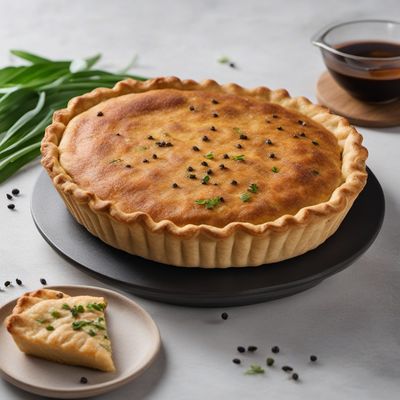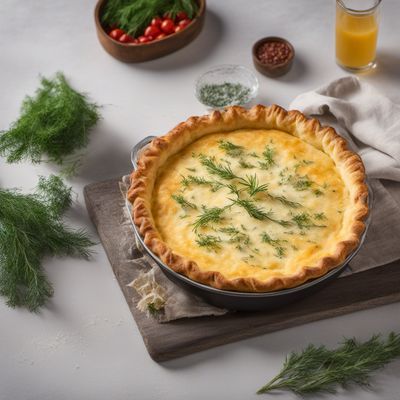
Dish
Plăcintă cu urdă
Cottage cheese pie
Plăcintă cu urdă is made with a flaky pastry crust and a filling of cottage cheese, dill, and onions. The pastry is rolled out and cut into circles, then filled with the cheese mixture and folded over to create a half-moon shape. The edges are crimped to seal the filling inside, and the pastry is baked until golden brown. The result is a delicious and savory pastry that is perfect for a quick snack or appetizer.
Origins and history
Plăcintă cu urdă has been a staple in Romanian cuisine for centuries. It originated in the Transylvania region of Romania, where cottage cheese is a common ingredient in many dishes. The dish has since spread throughout the country and is now enjoyed by people of all ages.
Dietary considerations
This dish contains dairy and is not suitable for those with dairy allergies.
Variations
Plăcintă cu urdă can be made with a variety of different fillings, including spinach, mushrooms, and bacon. Some recipes also call for the addition of eggs or sour cream to the filling.
Presentation and garnishing
Plăcintă cu urdă can be presented on a decorative plate with a sprinkle of chopped dill or a drizzle of olive oil. A slice of cucumber or tomato can also be used as a garnish.
Tips & Tricks
To prevent the filling from leaking out during baking, be sure to crimp the edges of the pastry tightly. You can also brush the edges with a beaten egg to help seal them. For a more rustic look, leave the edges uncrimped and fold them over to create a more free-form shape. If you don't have cottage cheese, you can substitute it with ricotta cheese.
Side-dishes
Plăcintă cu urdă is often served as a snack or appetizer, either on its own or with a side of sour cream or tzatziki sauce. It pairs well with a glass of white wine or a cold beer.
Drink pairings
Plăcintă cu urdă pairs well with a glass of white wine or a cold beer.
Delicious Plăcintă cu urdă recipes
More dishes from this category... Browse all »

Anpan
Japanese cuisine

Antakya künefesi
Turkish cuisine

Apfelstrudel
Austrian cuisine

Appelflap
Dutch cuisine

Apple Cider Doughnut
American cuisine

Asabi
Lebanese cuisine

Asawer
Lebanese cuisine

Athirasa
Sri Lankan cuisine
More cuisines from this region...

Belarusian cuisine
Hearty, Filling, Savory, Rich, Flavorful

Bulgarian cuisine
Hearty, Filling, Savory, Rich, Flavorful

Moldovan cuisine
Hearty, Savory, Flavorful, Spicy, Tangy

Romani cuisine
Bold, Spicy, Flavorful, Tangy

Russian cuisine
Hearty, Savory, Flavorful, Spicy, Tangy

Ukrainian cuisine
Hearty, Savory, Rich, Creamy, Earthy

